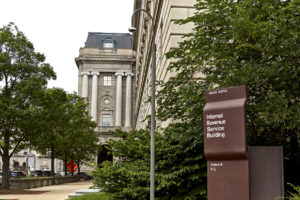CURRENT MONTH (September 2020)
Banking Law
Federal Trial Court Rejects Madden Challenge to Credit Card Receivables Program
By Catherine M. Brennan, Hudson Cook, LLP
On September 21, 2020, the U.S. District Court for the Western District of New York dismissed the lawsuit of Peterson. v. Chase Card Funding, LLC. The court dismissed Peterson’s state-law usury claim and unjust enrichment claim as expressly preempted by the National Bank Act because the national bank, which was not named as a defendant, retained a substantial interest in the credit card accounts at issue and, accordingly, may set “interest at the rate allowed by the laws of the State, Territory, or District where the bank is located.”
The defendants in the lawsuit were Chase Card Funding, LLC, and Chase Issuance Trust, special purpose vehicles for the bank’s credit card securitization program, and Wilmington Trust Company, as trustee of Chase Issuance Trust. The putative class action was brought by several New York residents with credit card accounts originated by the bank. The plaintiffs asserted that New York state’s usury law applied consistent with the reasoning in Madden v. Midland Funding, LLC, 786 F.3d 246 (2d Cir. May 22, 2015), cert. denied, 136 S. Ct. 2505 (June 27, 2016).
Consumer Finance
California Legislature Passes Consumer Financial Protection Law
By Christopher Capurso, Hudson Cook, LLP
On August 31, 2020, the California legislature passed the California Consumer Financial Protection Law California Consumer Financial Protection Law (“CCFPL”). The CCFPL will presumably be signed by Governor Gavin Newsom, as he included funding for its enactment in his 2020-2021 budget.
The CCFPL signals several large-scale changes to the California Department of Business Oversight (“DBO”), beginning with its name. Under the CCFPL, the DBO – California’s primary financial regulator – will be reorganized as the Department of Financial Protection and Innovation (“DFPI”). The newly minted DFPI will have the power to bring enforcement actions alleging unfair, deceptive, and abusive acts or practices (“UDAAP”), a power similar to that utilized by the Consumer Financial Protection Bureau. The DFPI will also have the authority to enforce violations of any consumer financial law.
The CCFPL applies broadly to “covered persons” and “service providers,” the definitions of which are similar to those in the Dodd-Frank Act. Despite the broad reach of the DFPI’s authority, the CCFPL specifically exempts from its requirements most entities that are already licensed and regulated under existing California law, including banks, credit unions, finance lenders, and mortgage lenders and servicers. Some licensed entities are not specifically exempt, such as payday lenders.
In addition to the creation of the DFPI and the establishment of its UDAAP authority, the CCFPL notably creates the Financial Technology Innovation Office. Based in San Francisco, this office will study emerging technologies in financial services, including virtual currencies, and engage with California companies developing new financial products and services.
Bureau Releases Supervisory Highlights, Issue No. 20
By Eric Mogilnicki & Uttara Dukkipati, Covington & Burling LLP
On September 4, 2020 the Consumer Financial Protection Bureau published its Supervisory Highlights, which shares the Bureau’s supervisory observations relating to consumer reporting, debt collection, deposits, fair lending, mortgage servicing, and payday lending that were completed between September 2019 and December 2019. These descriptions of the Bureau’s supervisory findings, along with a description of the one case where supervisory activities led to an enforcement matter, provides a new map of where the Bureau draws the line between supervision and enforcement. The report also compiles the Bureau’s statements, compliance bulletins, guidance, and supervisory program developments between February 1, 2020, and June 25, 2020.
CFPB Extends Comment Period on Seasoned Qualified Mortgage Proposal
By Eric Mogilnicki & Cody Gaffney, Covington & Burling LLP
On September 21, 2020 the Consumer Financial Protection Bureau announced an extension of the comment period for its notice of proposed rulemaking—first published in the Federal Register on August 28, 2020—that would create a new category of qualified mortgages in Regulation Z for first-lien, fixed-rate covered transactions that have met certain performance requirements over a 36-month seasoning period, among other requirements (the “Seasoned QM Proposal”). The comment period for the Seasoned QM Proposal was set to close on September 28, 2020, but has been extended to October 1, 2020, in light of the holiday of Yom Kippur.
Bureau’s Research Office Releases Report on Financial Preparedness
By Eric Mogilnicki & Cody Gaffney, Covington & Burling LLP
On September 24, 2020 the Consumer Financial Protection Bureau’s Office of Research released a 25-page report entitled Perceived Financial Preparedness, Saving Habits, and Financial Security. The report draws upon data from the CFPB’s Making Ends Meet survey to explore consumers’ savings-related behaviors, experiences, and outcomes. Key findings from the report include:
- Overall, 51.6% of consumers have less money in their checking and savings accounts than they think they need for emergencies, led by consumers with incomes of $40,000 or less.
- Consumers with lower levels of perceived financial preparedness (e., consumers who have less money in their checking and savings accounts than they think they need for emergencies) report lower levels of savings across all income categories.
- In addition, consumers with lower levels of perceived financial preparedness have lower levels of financial well-being, and are more likely to say that finances control their lives, across all income categories.
- Consumers who report lower savings levels are much more likely to have difficulty paying bills, across all income categories. The average cost of financial shocks that consumers reported as leading to their difficulty paying bills was $6,138, and the median cost was $2,000.
HUD Releases Final Disparate Impact Rule
By L. Jean Noonan, Hudson Cook, LLP
On September 25, 2020, HUD published its final Disparate Impact Rule in the Federal Register. Proposed in August 2019, the final rule was the agency’s effort to conform its 2013 rule with the Supreme Court’s 2015 decision in Texas Department of Housing and Community Affairs v. Inclusive Communities Project, Inc., which held that disparate impact claims were cognizable under the Fair Housing Act but articulated standards to clarify the plaintiff’s burden of proof.
The most significant change from the proposed rule was HUD’s abandonment of the proposed defenses for algorithmic models. In deleting these defenses in the proposed rule, which HUD conceded might have been “unnecessarily broad,” HUD stated that the substituted defenses provide a fair alternative for them. HUD said that a claim regarding an algorithmic model could be proven or defended based on the default rates of protected and non-protected groups approved under the model.
Specifically, if a lender rejects members of a protected class at higher rates than non-members, then the logical conclusion would be that members of the protected class who were approved, having been required to meet an unnecessarily restrictive standard, would default at a lower rate than individuals outside the protected class. Therefore, if the defendant could show that default risk assessment led to fewer loans being made to members of a protected class, but similar members of the protected class who did receive loans actually default more or just as often as similarly situated individuals outside the protected class, then the defendant could show that the predictive model was not overly restrictive. The final rule also added an exception that allows HUD to seek civil money penalties in discriminatory effects cases where the defendant has a history of intentional housing discrimination.
Tax Law
IRS Announces Form 1099-C Not Required for PPP Loan Forgiveness
By Douglas W. Charnas, McGlinchey Stafford PLLC
IRS Announcement 2020-12 notifies lenders that they should not file IRS Form 1099-C with the IRS or furnish it to borrowers to report the amount of qualifying forgiveness with respect to covered loans made under the Paycheck Protection Program (PPP). Specifically, Announcement 2020-12 states, “When all or a portion of the stated principal amount of a covered loan is forgiven because the eligible recipient satisfies the forgiveness requirements under section 1106 of the CARES Act, an applicable entity is not required to, for federal income tax purposes only, and should not, file a Form 1099-C information return with the IRS or provide a payee statement to the eligible recipient under section 6050P of the Code as a result of the qualifying forgiveness.”
The Announcement does not address whether lenders must file Form 1099-C when an emergency grant issued under the Economic Injury Disaster Loans (EIDL) program is forgiven. When a business applies for an EIDL under Section 7(b)(2) of the Small Business Act, it can request an emergency grant of up to $10,000 under Section 1110 of the CARES Act. This is an advance on an SBA disaster loan. Generally, disaster loans must be repaid. However, with respect to the emergency grant, the CARES Act states, “An applicant shall not be required to repay any amounts of an advance provided under this subsection, even if subsequently denied a loan under section 7(b)(2) of the Small Business Act [an EIDL] (15 U.S.C. 636(b)(2)).” Thus, if a business applies for an EIDL and requests an emergency grant, it will not be required to repay any of the advance, assuming the money is used for a proper purpose, even if it is denied an EIDL. Unlike forgiveness of a PPP loan, however, the CARES Act does not contain a provision that excludes from income the forgiveness of an emergency grant. It should be noted that IRC § 139 excludes from gross income any amount received by an individual as a qualified disaster relief payment. The fact that the Announcement does not address forgiveness of an emergency grant suggests the IRS may treat an emergency grant that is forgiven as a qualified disaster relief payment excluded from income under IRC § 139 that does not require the lender to file Form 1099-C.





